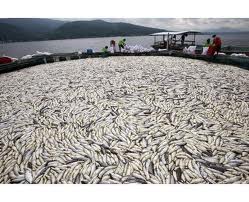Technically the Bureau of Fisheries and Aquatic Resources (BFAR) may be right that change in water temperature of the Taal lake was the prevalent cause of probably the worst fish kill in Batangas, Philippines.
However, sources who are familiar with the situation have a different perspective.
The real culprit of the problem they say is the overstocking by fish farmers of fish in the many cages around the affected area.
Most fish cage owners overpopulate their cages with fish beyond what is sustainable environmentally for fish survival. The area is so congested that it affects and deteriorates the quality of water around its environs and this could have suffocated the fish.
Besides, there was no monitoring done by a responsible government agency that would regulate the fish cage owners activities if what they were doing still in accordance to the norms and sound practices of fish farming, to prevent any deliberate pollution and at the same time preserve the integrity of the area.
For business entrepreneurs fish farming is one of the most lucrative short term investment that one can make considering the high market demand for consumers of fish products.
The ROI is so good, that for a short period of time of their investment investors can get hold of their money back with profits easily with not much risks.
The problem lies if the investor operators are motivated by greed and want some more profits of their short term investment, they can deliberately spare fish environs quality by quantity through overstocking and this could have caused the massive fish kill.
With what had happened, this serves as a lesson not only to fish farmer investors but to all other business venture investors, that to earn moderately is a virtue but to earn more than what is enough is greed, with tragic catastrophic repercussion.
